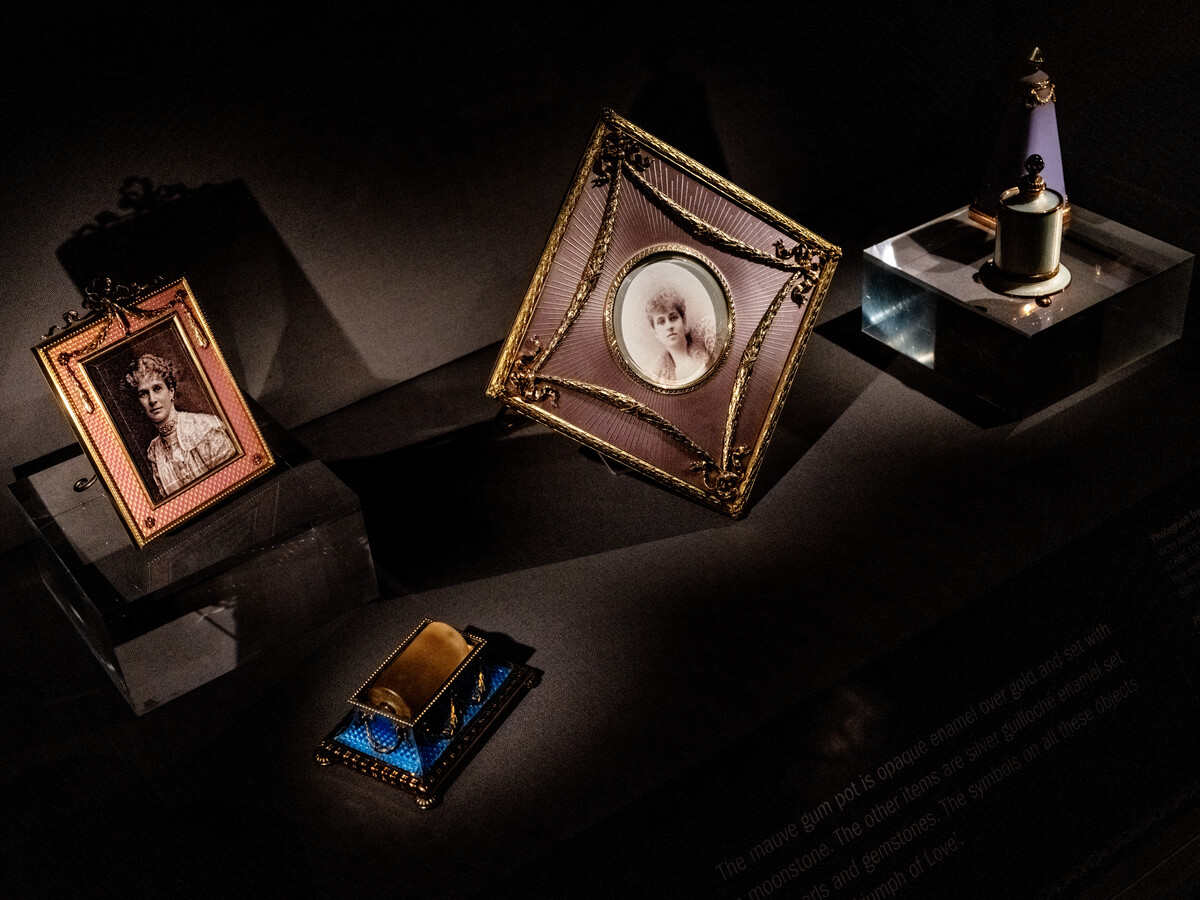Amateur detective solves our Fabergé Mystery
Three years ago, we put on display in Brighton Museum some fabulous Fabergé items which had been discovered by chance in our collection stores by Antiques Roadshow expert Geoffrey Munn OBE.
The amazing find included ornate frames with two mystery women in them. Geoffrey Munn, and two of our curators attempted to uncover who they were with no luck.
Cue amateur detective Andreane who came to visit the museum and read about the mystery on the sign in the museum. The actress and writer went home to London and did her own investigation and she’s solved the mystery. She discovered the women were Sophia of Prussia and Maria Perugia.
The diamond shaped frame is Sophia of Prussia, the Queen of Greece. She was the granddaughter of Queen Victoria and sister of Kaiser Wilhelm II of Germany.
The square frame is Maria Perugia, the wife of Leopold de Rothschild, one of the wealthiest men in the world at the time.
Andreane describes in an interview here how she managed to crack the mystery when so many others could not.

Why were you in the museum?
I was visiting Brighton for the first time with my sister, and I was very keen to see the Edward Burne-Jones exhibit that was on at the museum at the time.
What sparked your interest in finding out more about the
Fabergé photo?
As we wandered around the museum, my sister and I saw the beautiful Fabergé display. I noticed the sign next to the display, which indicated that the identities of the women portrayed were a mystery, despite the efforts of researchers, and asked for information from any visitors who had insights to share. I was struck by the idea that these women’s identities were lost, and immediately felt compelled to look into it more.
Have you done anything else like this before?
Before this, I’d investigated various historical subjects and riddles, mostly as sources of creative inspiration and reference for my scriptwriting and acting. And I’ve always loved a good mystery.
How did you go about researching?
I initially read through all the information I could find online about the pictures, in particular through the B&HM blog. Following that, I used my knowledge of historical fashion and hairstyling to try and date the pictures myself. I could tell that the older of the two women was likely in her early 40s and her clothes and hair placed her in the early Edwardian period. Fabergé frames were very valuable, which showed me that she must had considerable wealth and social status. I calculated her to be born in the early 1860s, and assumed she would have been married in the 1880s. Moreover, as a southern European myself, I had a hunch that she may not been born in England, which helped as well.
At that point I searched through debutante portraits, and then I looked through lists of recently married men of the upper classes, not just royalty, and the Rothschild name came up. I gasped when I came across Marie Perugia’s portrait from the Rothschild Archive website, and then found engravings and articles about her wedding to Leopold de Rothschild in 1881. After a few hours of searching, googling, and connecting the dots, the mystery was solved.
What was the vital clue?
Her clothes and hair, which helped with dating her, and then the rest was all about research.
What do you do for a job/where do you live?
I’m an actor and screenwriter. I have recently co-founded the production company Wine Dark, and I’m an activist for neurodivergence, working on increasing awareness for ADHD and autism in film and TV. I’m originally from Athens, Greece, but I’ve been living in the UK for eight years.
How did you feel when you cracked the case?
I’m not gonna lie, I felt very satisfied and extremely excited with my findings.
What’s it like to discover the answer to a mystery when other
experts couldn’t?
I’m very happy to have solved the mystery, and I hope to solve more in the future, but my research very much relied on the work of others, so in a way, it feels like a collaborative effort. I just put the dots together.
Are you doing any more historical detective work at the
moment?
People have suggested to me that I should become a detective, but for now, I’m putting my pattern recognition skills and research abilities towards figuring out the story of The Three Graces. Aglaia Ionides, Marie Spartali-Stillman and Maria Cassavetti were Anglo-Greek models and artists that greatly influenced the Pre-Raphaelite Brotherhood, but whose work is largely lost to history. I’m working on bringing their story to life through a script I’ve been writing and researching for the past two and a half years. I’m endlessly fascinated by women whose achievements have been forgotten, and the kind of historical and detective work it takes to bring them back.
If all else fails, I’ll become a PI!

